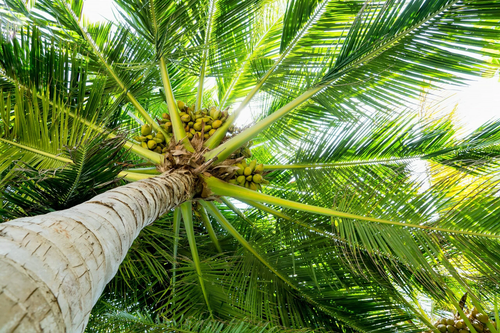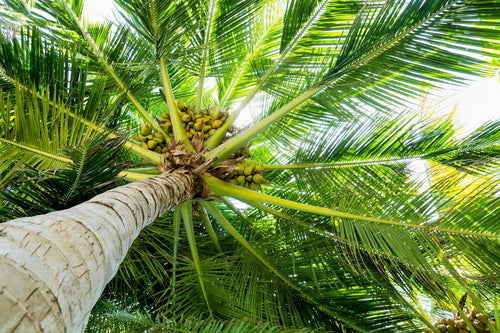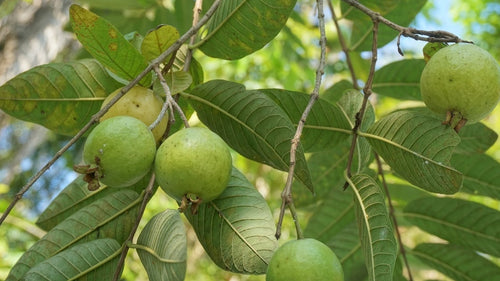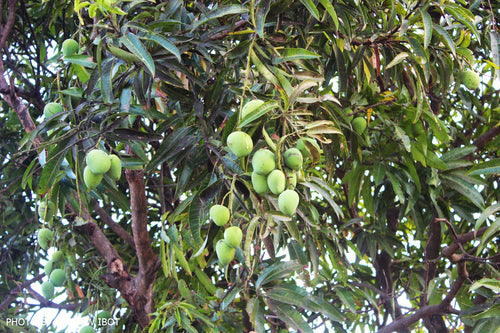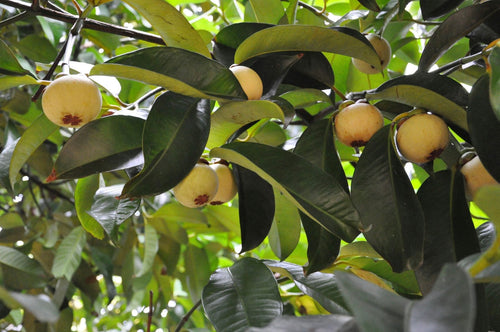"From Ship to Soil: Swire Shipping’s Agroforest Contribution"
Swire Shipping's agroforest tree plantation initiative reflects a powerful commitment to sustainability and environmental restoration. By adopting the Read more
Project Update 1

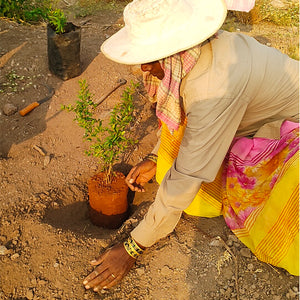
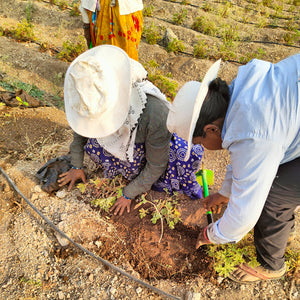

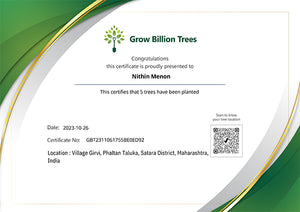

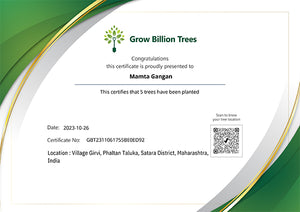

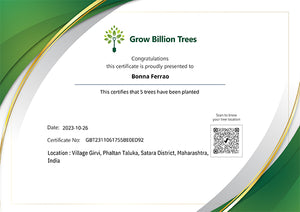
Digital Forest
Forest with 25 Trees planned
Want to plant your tree now?
Plant a Tree @ 299"From Ship to Soil: Swire Shipping’s Agroforest Contribution"
Swire Shipping's agroforest tree plantation initiative reflects a powerful commitment to sustainability and environmental restoration. By adopting the agroforestry model, Swire Shipping is integrating tree planting into agricultural settings to enhance soil fertility, support local ecosystems, and foster resilient landscapes. This initiative goes beyond standard reforestation, combining tree planting with agricultural practices to create a sustainable balance that benefits both the environment and local communities.
In the heart of this effort, Swire Shipping is dedicated to reducing its carbon footprint and promoting biodiversity. The trees, strategically planted within agricultural areas, provide a habitat for wildlife, improve soil structure, and contribute to long-term environmental health. This approach strengthens ecological balance, encouraging sustainable agricultural practices and contributing to Swire Shipping’s broader goal of creating positive environmental impacts. Through this initiative, Swire Shipping champions a greener future, aligning its operations with a global vision of sustainability and community well-being.
Tree Plantation Date
7th November 2023
Plantation Location
Village Girvi, Phaltan Taluka, Satara District, Maharashtra
Trees Planted
Total Count: 25 Trees
Species Name: Mango, Guava, Chiku, Jackfruit, Coconut
Forest Type: Agroforest
Swire Shipping’s agroforest tree plantation initiative is a transformative effort to blend environmental stewardship with sustainable agriculture. By planting trees within farming landscapes, the initiative aims to enrich soil health, boost biodiversity, and provide lasting ecological benefits to the region. Unlike traditional reforestation, this agroforestry approach nurtures a symbiotic relationship between agriculture and natural vegetation, helping to restore balance while supporting local livelihoods. Through this project, Swire Shipping reinforces its commitment to reducing its carbon footprint and fostering resilient ecosystems, aligning its corporate mission with impactful, long-term sustainability practices.
Advantages Of Agroforest
Enhanced Soil Health
By planting trees alongside crops, this agroforestry initiative enriches the soil. The trees add organic matter as their leaves and branches decompose, improving soil structure and nutrient content. Their roots help prevent soil erosion and retain water, promoting healthier crop growth and reducing the need for artificial fertilizers.
Increased Biodiversity
Agroforests create a varied habitat that supports a wide range of plant and animal species. The presence of trees offers shelter and food sources for insects, birds, and small animals, thus increasing biodiversity. This diversity stabilizes ecosystems and supports natural pest control, reducing reliance on chemical pesticides.
Carbon Sequestration
Trees are natural carbon sinks, absorbing carbon dioxide from the atmosphere and storing it in their biomass. By implementing tree planting in agricultural areas, Swire Shipping helps capture significant amounts of CO₂, reducing its carbon footprint and positively impacting global climate goals.
Support for Local Communities
This agroforest model benefits local farmers by promoting sustainable agricultural practices that can improve crop yields and generate additional income. With trees that provide shade and reduce wind damage, crop productivity often improves, supporting food security and economic stability for farming communities.
Resilient Ecosystems
Agroforestry enhances the resilience of ecosystems, making them better equipped to adapt to climate change and withstand extreme weather. The tree cover acts as a buffer against heavy rains and droughts, protecting crops and soils and thus ensuring more stable, reliable production cycles.
Sustainable Land Use
By integrating trees with agriculture, the agroforest model maximizes the use of available land for both ecological and productive purposes. This approach allows the land to be used efficiently, yielding both environmental and economic benefits without overexploitation.
Long-term Environmental Benefits
Beyond immediate gains, the agroforest initiative creates lasting ecological health. It promotes natural processes that support land and water conservation, ensuring that future generations inherit a balanced and fertile environment that can sustain diverse forms of life and productive agriculture.
Activities During Tree Plantation
Tree Plantation Purpose
SDGs Achieved Through Agroforest
1. SDG 2: Zero Hunger
By promoting agroforestry, Swire Shipping supports sustainable agriculture that can improve crop yields. The presence of trees in agricultural landscapes creates microclimates that protect crops from extreme weather, reduces soil erosion, and enhances nutrient availability. These factors can lead to higher, more resilient food production, benefiting local farmers and communities and contributing to food security in the region.
2. SDG 6: Clean Water and Sanitation
Trees in agroforestry systems play a significant role in protecting water resources. Their root systems help reduce surface runoff and soil erosion, leading to better water retention in the soil and reduced pollution in nearby water bodies. By improving the soil’s ability to retain water, the initiative helps ensure more sustainable water availability, especially in agricultural areas prone to water stress.
3. SDG 8: Decent Work and Economic Growth
4. SDG 13: Climate Action
5. SDG 15: Life on Land
This initiative promotes biodiversity and ecosystem restoration by integrating native tree species with agricultural lands. The trees create habitats for various species, including pollinators and other beneficial insects, enhancing the ecosystem's overall health. By preventing deforestation and supporting biodiversity within agricultural areas, Swire Shipping’s project contributes to restoring degraded lands and sustaining ecosystems for future generations.6. SDG 17: Partnerships for the Goals
Swire Shipping's partnership with Grow Billion Trees exemplifies a collaborative approach to achieving, Partnerships for the Goals, combining resources and expertise to amplify their environmental impact. By working with Grow Billion Trees, Swire Shipping taps into a wealth of knowledge in sustainable agroforestry and reforestation, ensuring that their tree plantation initiative is strategically designed for maximum ecological and community benefit. This alliance enables both organizations to scale up their efforts, from selecting suitable tree species to training local farmers on agroforestry best practices. Through this partnership, Swire Shipping not only strengthens local ecosystems but also fosters a model of sustainable land use that supports local economies and aligns with global sustainability objectives, demonstrating the power of collective action toward a greener future.
ESGs Achieved Through Agroforest
Environmental (E)
Swire Shipping's tree plantation initiative in an agroforest setting supports significant environmental benefits by enhancing biodiversity, capturing carbon, and improving soil and water quality. Trees integrated into agricultural landscapes act as natural carbon sinks, helping to reduce greenhouse gas emissions and mitigate climate change. The agroforestry model also preserves soil structure, prevents erosion, and promotes water retention, contributing to long-term ecosystem health. By creating habitats for various species, this initiative fosters biodiversity, supporting a balanced and resilient environment that benefits both local communities and the planet.
Social (S)
The initiative has a strong social impact by supporting local farmers and communities. By partnering with local farmers to implement agroforestry practices, Swire Shipping provides sustainable income opportunities and promotes knowledge transfer on sustainable agricultural practices. The project contributes to food security by improving crop yields and resilience, which benefits farmers' livelihoods. Additionally, it strengthens community engagement around environmental stewardship, empowering communities to play an active role in protecting and preserving their environment while supporting local economic stability.
Governance (G)
Swire Shipping's commitment to responsible governance is reflected in its approach to transparency, community involvement, and sustainable impact. Through its partnership with Grow Billion Trees, Swire Shipping demonstrates accountable environmental practices, ensuring that all aspects of the tree plantation initiative are carried out responsibly and with long-term sustainability in mind. The collaboration underscores Swire Shipping’s dedication to aligning with global sustainability standards, incorporating ESG principles into its operations, and consistently communicating its progress and impact with stakeholders, thereby reinforcing its commitment to responsible corporate governance.
Commitment by Grow Billion Trees
Grow Billion Trees is committed to driving sustainable plantation efforts, ensuring every initiative aligns with key environmental objectives and promotes long-term ecological balance. They focus on selecting native tree species that are well-adapted to local ecosystems, ensuring a higher survival rate and stronger environmental impact.
To maintain plant health and longevity, Grow Billion Trees emphasizes continuous maintenance and regular monitoring of the plantations. This approach helps ensure that each tree thrives, contributing effectively to both biodiversity and climate resilience.
Transparency is a core principle in their operations. Clients receive comprehensive reports, including geo-tagging of planted trees, survival rate updates, and ongoing progress reports. This level of openness allows clients to track the direct impact of their contributions, reinforcing trust and accountability.
Through their dedication to sustainable practices, Grow Billion Trees ensures that every plantation project leaves a lasting positive footprint on both the environment and the local communities it serves.
Summary
Swire Shipping’s tree plantation initiative in the agroforest model is a forward-thinking project aimed at combining environmental restoration with sustainable agricultural practices. By partnering with local farmers, Swire Shipping integrates tree planting into farmland, enhancing biodiversity, improving soil health, and capturing carbon. This approach not only aids in combating climate change but also supports local communities by boosting agricultural productivity and creating additional income opportunities. Through collaboration with Grow Billion Trees, the initiative leverages expertise in agroforestry to ensure impactful, long-lasting benefits for the environment and society. Swire Shipping’s commitment to this sustainable model underscores its dedication to ESG principles and its role in fostering resilient ecosystems and sustainable livelihoods.
Trees for Corporates
Trending
Most Popular
1. Sustainable Agroforestry
crops thrive, biodiversity blooms, and local communities enjoy sustainable income. Swire Shipping’s approach proves that we don’t have to choose between green profits and green trees. With sustainable agroforestry, everyone—including Mother Nature—wins big time!
2. Climate Action with Agroforest
plant, grow, repeat. Because nothing says “carbon capture” like a leafy green field.
3. Biodiversity in Agroforest Systems
Think of agroforest systems as nature’s version of a block party, where everyone’s invited—plants, animals, and crops alike! Swire Shipping’s agroforestry approach boosts biodiversity by creating habitats that attract wildlife and promote healthy ecosystems. Trees alongside crops act like apartment buildings for insects, birds, and small mammals. Plus, they help control pests naturally. Swire Shipping is tapping into this balanced ecosystem, where diverse species and productive farmland coexist. Biodiversity isn’t just a buzzword here; it’s a thriving, green community with real benefits for farmers and the planet.
4. Carbon Sequestration Benefits
Carbon sequestration is a fancy term for trees gulping down carbon dioxide, and agroforestry is great at it. Swire Shipping’s agroforest initiative captures CO₂, helping offset carbon footprints. Each tree planted in an agroforest acts like a sponge, absorbing greenhouse gases and storing them in its branches, roots, and leaves. It’s like Swire Shipping has a natural air purifier on overdrive. By turning carbon from “pollution” to “nourishment,” this initiative shows how trees do much more than stand around—they actively clean up the planet!
5. Soil Health Restoration
Healthy soil is the unsung hero of sustainable agriculture, and Swire Shipping’s agroforest initiative is on a mission to restore it. Trees planted alongside crops add organic matter, improve soil texture, and prevent erosion. It’s like a spa day for the earth! As trees shed leaves and roots, they enrich the ground, creating a nutrient-rich haven for crops. Swire Shipping’s efforts ensure that the soil stays strong, stable, and ready to support crops year after year. After all, happy soil makes for happy, thriving crops.
6. Economic Upliftment for Farmers
Agroforestry isn’t just about green landscapes—it’s also about green wallets. Swire Shipping’s agroforest initiative provides local farmers with sustainable income opportunities by integrating tree planting with their agriculture. These trees don’t just sit pretty; they boost crop yield, protect against wind, and increase soil health, all of which mean better profits. For farmers, this partnership offers extra income and stability. Swire Shipping’s commitment proves that when the environment wins, local economies can too, creating a lasting impact on rural communities.
7. Sustainable Land Use Practices
Sustainable land use is all about making every inch count, and Swire Shipping’s agroforestry does just that. Instead of using land for just crops or just trees, agroforestry combines them for maximum benefit. This approach allows Swire Shipping to create productive landscapes without overexploitation, maintaining balance between nature and agriculture. Trees and crops share the space, complementing each other while creating a more resilient environment. This isn’t just sustainable; it’s smart land use that gives the earth a break while keeping production up.
8. Community Engagement in Tree Plantation
Community engagement is at the heart of Swire Shipping’s agroforest initiative. Partnering with local farmers, Swire Shipping turns tree planting into a community affair. The company provides resources and training, empowering farmers to care for the trees and gain extra income. It’s more than a plantation—it’s a collaboration. This approach helps build a sense of ownership and pride, making environmental care a shared responsibility. When the community is involved, the impact grows beyond the trees, fostering a legacy of environmental stewardship that everyone can be proud of.
FAQ
What is the goal of Swire Shipping's tree plantation initiative in India?
Swire Shipping's tree plantation initiative aims to promote sustainable agroforestry practices across India. By integrating tree planting into farmland, we enhance biodiversity, improve soil health, and support carbon sequestration, contributing to climate action. Our initiative benefits local communities by boosting agricultural productivity and strengthening resilience against environmental changes, such as droughts and soil erosion. Swire Shipping is committed to creating sustainable, long-term impacts that align with both ecological goals and community development.
How does Swire Shipping’s agroforest approach work?
Swire Shipping’s agroforest approach combines tree planting with traditional agriculture to create a mutually beneficial environment. Trees are planted alongside crops to improve soil fertility, reduce erosion, and provide a sustainable water balance. By adopting this agroforestry model, we support healthier ecosystems and encourage sustainable farming, which benefits both the environment and local farmers. Our approach ensures a balanced, productive, and sustainable land-use system that aligns with India’s agricultural needs and environmental priorities.
Why is Swire Shipping investing in agroforestry?
Swire Shipping is investing in agroforestry to address climate change and support sustainable development. Agroforestry allows us to create green spaces that capture carbon, enhance soil health, and provide diverse habitats for wildlife. This model is ideal for India’s agricultural landscape, as it supports farmers by improving crop resilience and promoting long-term agricultural productivity. Through this investment, Swire Shipping demonstrates its commitment to environmental and social responsibility.
What are the environmental benefits of Swire Shipping’s tree plantation?
Swire Shipping’s tree plantation provides multiple environmental benefits, including carbon sequestration, improved soil fertility, and enhanced biodiversity. Our agroforest model helps reduce greenhouse gases while creating habitats for various species. Additionally, tree roots reduce soil erosion and improve water retention, contributing to healthier ecosystems. By implementing these practices, we work towards a greener, more resilient India and help combat the impacts of climate change.
How does Swire Shipping’s initiative benefit local farmers?
Our initiative supports local farmers by enhancing soil health, which can lead to better crop yields and improved livelihoods. Trees planted within farmlands create protective wind barriers, enhance moisture retention, and add organic matter to the soil. This helps farmers increase agricultural productivity and contributes to sustainable income. By partnering with farmers, Swire Shipping ensures that the initiative delivers long-term economic and ecological benefits for local communities.
What is the significance of partnering with Grow Billion Trees?
Swire Shipping’s partnership with Grow Billion Trees is crucial for ensuring impactful and sustainable agroforestry practices. Grow Billion Trees brings valuable expertise in selecting tree species, training local farmers, and implementing environmentally sound planting techniques. Together, we amplify our efforts to combat climate change, improve biodiversity, and support rural livelihoods. This partnership aligns with Swire Shipping’s commitment to creating meaningful and lasting environmental change in India.
How does Swire Shipping’s initiative contribute to climate action?
Our tree plantation initiative helps capture carbon and reduce greenhouse gas emissions, actively contributing to climate action. Through agroforestry, we support sustainable land use, which improves soil carbon storage and resilience against climate impacts. By increasing tree cover and encouraging responsible agricultural practices, Swire Shipping aims to create a model for climate-positive development, supporting India’s efforts to combat global warming.
What type of trees are planted in Swire Shipping’s agroforest projects?
Swire Shipping carefully selects native and diverse tree species for its agroforest projects to best support local ecosystems. Native trees are suited to India’s climate, helping enhance biodiversity, improve soil fertility, and ensure sustainable growth. By planting a variety of tree species, we create habitats for local wildlife, encourage biodiversity, and foster healthy soil. Our approach focuses on long-term environmental benefits while aligning with local agricultural needs.
How does agroforestry differ from traditional reforestation?
Unlike traditional reforestation, which focuses solely on planting trees, agroforestry integrates trees within agricultural landscapes. This model, used by Swire Shipping, combines tree planting with crop cultivation, creating a sustainable land-use system that benefits both the environment and farming communities. Agroforestry enhances soil health, improves crop resilience, and provides economic benefits to farmers, making it a holistic approach to environmental restoration.
What are the long-term goals of Swire Shipping’s agroforest initiative?
Swire Shipping aims to create sustainable, productive landscapes that support both environmental health and local livelihoods. Our long-term goals include restoring ecosystems, increasing carbon sequestration, supporting biodiversity, and promoting sustainable agriculture. By collaborating with local farmers and experts, Swire Shipping strives to build resilient communities that benefit from balanced, sustainable land use. Our initiative reflects a commitment to creating enduring positive impacts in India and beyond.
- Choosing a selection results in a full page refresh.
- Opens in a new window.


